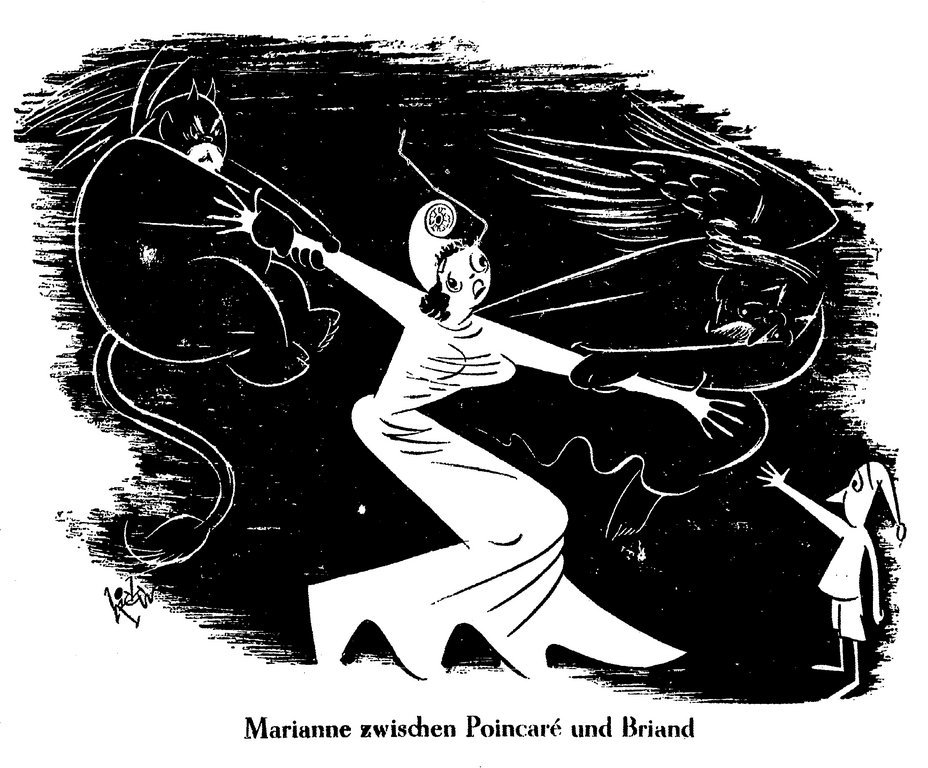Cartoon by Hicks on the future of Franco-German relations (2 November 1950)
Image ‘Marianne between Poincaré and Briand’. On 2 November 1950, as discussions are held on the military rearmament of the Federal Republic of Germany, German cartoonist Wolfgang Hicks illustrates France's dilemma. Faced with the outstretched hand of the little German Michel, representing the young West Germany, France, depicted as Marianne, has two choices: it can either adopt a policy of mistrust and firmness (Poincaré as a devil on the left) with regard to its German partner, or choose the path of rapprochement (Briand as an angel on the right). Raymond Poincaré, President of the French Republic from 1913 to 1920, fought for the return of Alsace-Lorraine to France and the annexation of the Rhineland and the Saar. During his time as a senator (1920–1934), he chaired the Senate’s Reparations Commission and was particularly firm in his application of the provisions of the Treaty of Versailles, especially with regard to defeated Germany. On the other side, Aristide Briand, a French politician and diplomat, several times President of the Council and Minister for Foreign Affairs and Justice, adopted a policy that was openly geared towards Franco-German rapprochement. In 1926, he received the Nobel Peace Prize with German politician Gustav Stresemann for his efforts to promote reconciliation between France and Germany through the 1925 Locarno Treaties.
Source and copyright
Source: HICKS, Wolfgang. "Marianne zwischen Poincaré und Briand" dans Die Zeit. Wochenzeitung für Politik - Wirtschaft - Handel und Kultur. Hamburg: Zeitverlag. 02.11.1950, n° 44, p.1.
Copyright: (c) Hicks (Karikaturist), Stiftung Haus der Geschichte der Bundesrepublik Deutschland, Bonn

